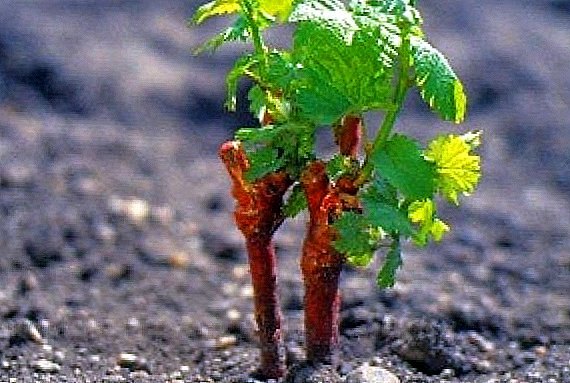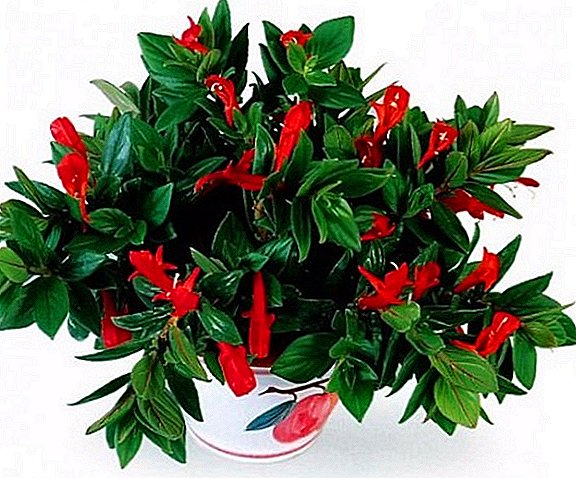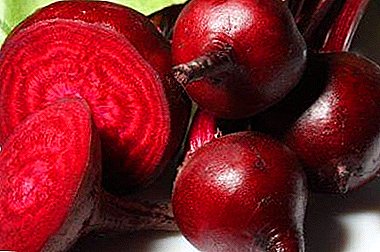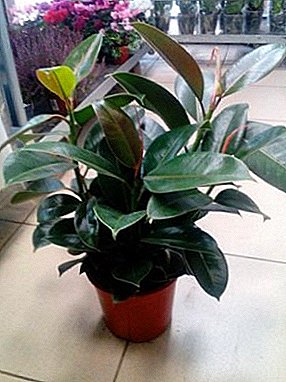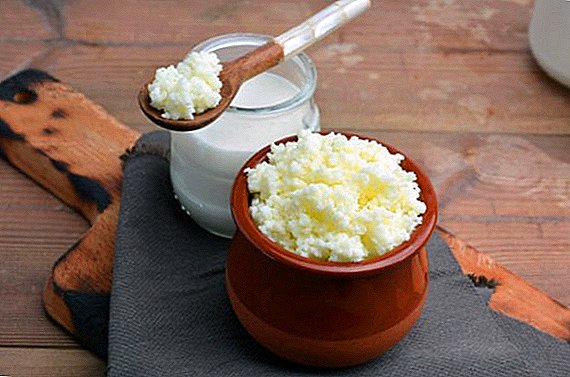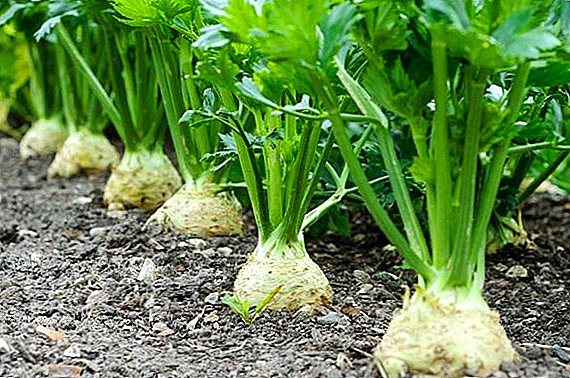
Fragrant celery root is a desired vegetable in any garden. To grow a bountiful harvest of this crop, one should choose the optimal variety and follow the recommendations described below.
Characteristics of the plant and its varieties
Celery is a biennial crop of the Umbrella family.
Its characteristic features are:
- bush height up to 1 m with a large leafy rosette;
- leaves are dissected, bright green, with a characteristic aroma;
- the root crop is formed in the first year;
- tuber round or spindle-shaped;
- the color of the tuber is gray or beige-white, the pulp is white or cream;
- blooms and gives seeds when re-planting.
Did you know? Celery is considered a plant with a negative calorie content. For processing 19 kcal contained in 100 g of vegetable, the body spends 25 kcal. Thus, celery is great for those who want to lose weight.
Currently, there are a large number of varieties of different ripening terms.
The most popular include:
- Medium early Prague giant ripens in 120 days. Large tubers have light pulp and strong aroma.
- Roots Diamanta remain white and after heat treatment. The term of the growing season is 150 days, and the average weight of a tuber is 200 g. The variety is resistant to splicing.
- Celery Apple It has a high sugar content and yield up to 5 kg per 1 m². It is resistant to diseases and well kept.
- Up to 400 g can grow tuber varieties Strong man. Mid-season vegetable will be ready in 170 days.
- Giant it also ripens on average, and the mass of its tuber is up to 700 g. The advantage of the variety is also its high yield and excellent taste.
- Celery Maksim ripens 200 days after germination and refers to late varieties. It has dense spicy pulp and a mass of up to 500 g. It is well preserved throughout the winter.

Features of growing seedlings of root celery at home
To obtain a stable crop, a seedling method of growing this culture is used.
Calendar dates of planting seeds
The exact dates of sowing must be chosen in accordance with the regional location of the site. Focusing on the term of seed germination in 2-3 weeks, the average sowing time begins in early February.
Selection and processing of seeds
The germination of celery seeds drops rapidly as they are stored, which is why it is recommended to use only freshly harvested material or to buy products with an appropriate collection period.
Important! Seed material of well-known companies are often treated with special substances for disinfection and growth. Such seeds do not need additional processing.
Seeds also contain a large percentage of essential oils, therefore they germinate for quite a long time.
To speed up the process, use three methods:
- Pre-soak the seeds in water with a temperature of about + 50 ° C for 30 minutes, and then leave in warm water for 2 days.
- Subject seeds to sharp temperature fluctuations, leaving them for 8 hours at + 25 ° C, and then transferred to a place with a temperature of + 1 ° C for 18 hours.
- Germinated on wet paper or tissue, placing them in a dark place. Maintaining a constant level of humidity, waiting for the first sprouted sprouts to appear, after which the seeds are sown in the ground.
 Sprouting celery seeds
Sprouting celery seedsCollected independently or purchased seeds without treatment should also be disinfected to reduce the risk of further diseases. To do this, the seeds are soaked in a solution of potassium permanganate or in special preparations according to the instructions.
Selection of suitable soil and tanks for planting
For celery seedlings fit a standard soil mixture, which can be purchased at the garden center. To make a mixture with your own hands you need to take:
- 1 part of sand, peat and humus;
- or 6 parts of peat, 2 parts of humus and 1 part of garden soil.
Did you know? A wreath of celery stalks was presented to all champions of the Nemean Games in ancient Greece.
The finished soil is disinfected by the manufacturer, and A home-made mixture must be disinfected using one of these methods:
- Spill with potassium permanganate solution.
- Steam over a water bath for about 10 minutes.
- Burn in the oven for 30 minutes at a temperature of + 80 ... + 90 ° C.
- Freeze the soil at -15 ° C, thaw, repeat the procedure 3 times.
Celery is most often sown in boxes, but it is also possible to use individual containers made of plastic or peat.
 The calcination of the soil in the oven
The calcination of the soil in the oven
Sowing seeds
Celery seeds are very small, so they can not be placed in the ground deeper than 5 mm. Sometimes a simple uniform spreading of seeds on the ground is used, and then a light sprinkling with vermiculite.
We also advise you to read about the features of cultivation of celery and care for it in the open field.
Sowing in the grooves is carried out with an interval between rows of 3 cm. You can also focus on a grid of 2 × 2 cm, the cells of which are conveniently marked with a match.
Crops should be covered with a film, a sheet of plastic or glass and put in a warm dark place. For successful germination, it is important to maintain constant moisture with a sprayer.
Video: Sowing celery seed for seedlings
Seedling care
As soon as shoots are noticed, the container must be moved to a lighted area with a temperature of about + 15 ° C. If there is not enough light in the room, it is necessary to use additional lighting with fitolamps. Otherwise, the seedlings will be quickly pulled out.
Celery sprouts are brittle and thin stalk, so instead of watering using spraying. The water used should be at room temperature (approximately + 25 ° C).
Important! Temperature is below +10°C will lead to the formation of an unnecessary floral arrow.
Seating in separate cups (dive) is carried out after the appearance of the first pair of true leaves in the plants. It is desirable to shorten the main root by 1/3 of the length. The soil is poured over the cotyledon, leaving an open point of growth.
In open ground, seedlings are transferred not earlier than mid-May, since young plants do not tolerate hypothermia. The plants should have 5-7 leaves, which corresponds to about 70-80 days of growth. It is desirable 10 days before planting to begin gradual hardening of celery, lowering the temperature and opening it to the sun, while it is important to protect the planting from drafts and direct sunlight in the first days.

Planting in open ground
The condition of a bountiful harvest is careful preparation of the site for a celery bed and following the planting pattern.
Choosing a landing site
For successful cultivation of culture requires a sunny plot with loose and fertile soil and low groundwater levels. On the garden should not be fresh organic additives. As a fertilizer in the spring, rotted manure is introduced according to the formula 2-4 kg per 1 m². Lime should be added to the acidic soil (1-2 kg per 10 m²), otherwise the roots will be rough and will not be able to reach the expected size.
For planting, you can use the garden, on which until then grew the nightshade, cucumbers, pumpkin or cabbage. Early ripening celery varieties may have time to grow after harvesting early radishes or greens, thus allowing to increase the productivity of a particular plot.
Find out also whether it is possible to grow celery at home on a windowsill.
Step-by-step landing scheme
The optimal time for transplanting seedlings is a cloudy day or evening. It is necessary to prepare a film cover that will protect delicate plants in case of freezing at night.
Transplantation is carried out as follows:
- A bed is marked on ranks with an interval of 50 cm.
- Before planting the land plentifully watered.
- Celery is planted, leaving 25-30 cm between the plants. The seedling growth point should remain on the surface.
- Planting is covered with a film or a special agrofabric, or the seedlings are provided with individual protection, covering each plant with a trim of a plastic container.
 The distance between the planting of bushes seedlings should be 25-30 cm
The distance between the planting of bushes seedlings should be 25-30 cm
Further care
To get large and tasty root vegetables will help the rules of agrotechnology, which must be observed regardless of the selected grade.
Watering
This culture does not tolerate the drying out of the soil, so it is necessary to monitor the level of its humidity. Regular watering during the entire growing season is produced under the root of the plant.
Top dressing
For the entire season, you need to spend 4 dressings on this schedule:
- 7 days after planting on the bed, they are watered with herbal extract, which is prepared from fermented herbs (nettle, comfrey, chamomile, etc.). You can use fermented solution of mullein.
- After 2 weeks, the celery is fed with chicken manure or again with mullein.
- In mid-July, it is worthwhile to apply superphosphates.
- In the phase of the ovary of the head, feeding with a solution of boric acid is appropriate.
We recommend reading about planting and caring for celery in the garden.
Soil care
Celery root loves loose soil, so in the first weeks it is recommended to loosen the rows. You can also fill the interval between the beds of mulch, which will preserve the structure of the soil and reduce the frequency of occurrence of weeds.
Hilling in the cultivation of this vegetable is not used. With a thickening of the root even recommend to otgresti from him part of the soil.

Pruning roots and leaves
In the first week of summer, lateral roots usually appear on the root, which increase the load on the shrub and reduce the growth of tubers. They are pruned with a sharp knife or garden shears. Cut off all the roots, directed horizontally.
During the entire growing season, celery leaves grow and the lower ones gradually sink to the ground. Such stems can be cut and used for culinary purposes. When daylight starts to decrease, the root crop will move to the most active growth phase and the number of leaves will need to be reduced. Leave only vertical shoots.
Important! If you do not timely trim a part of the foliage, the tubers will become flat and will not reach the maximum size.
Harvesting and storage
Harvesting can be carried out even after the first frost. Root crops tolerate short-term lowering of temperature to -3 ° C. Depending on the variety, celery is harvested in late September-October.
Tubers must be cleaned and cut tops and small roots. The optimal storage location is a cellar with a temperature slightly above 0 ° C. At fairly high humidity, which can be maintained by placing vegetables in wet sand, the root crop can be stored for 4-8 months.
Video: Harvesting and storing of celery root
Celery Root is a tasty and healthy vegetable that is easy to grow in your own area. Fulfilling the basic requirements for seed germination and planting care, you can count on a large crop of root crops.


